Glossier is the highest scoring brand among the 50 brands on our U.S. Participation Brand Index – a phenomenal position when we consider that it is less than 10 years old. (The brand has more recently expanded into Europe, and sits in 7th position on our UK Study. The patterns that we discuss below in the US data are also seen in the UK numbers).
While most brands work to push their customers down a marketing funnel, Glossier has fuelled growth by pioneering an ecosystem of looped customer conversations, harnessing the momentum of people power. In this article, we pull apart this inspired model of brand building and draw out some key principles to consider when developing your participation branding strategies.
Glossier has enjoyed incredible success as a Direct-to-Consumer (DTC) online beauty and skincare brand since it launched in 2014, and has since been valued at $1.2bn.
Although the Glossier company didn’t materialise until 2014 it has its origins in 2010, when Teen Vogue fashion assistant Emily Weiss started her side hustle, the beauty lifestyle blog ‘Into the Gloss’. The blog took off because it spoke honestly about a range of beauty topics that interested its readers.
‘Into the Gloss’ gave Weiss a unique insight into her readers’ beauty needs. So, launching a beauty brand for them felt like a natural extension. Glossier was founded as the off-shoot to its sister blog. It perfectly caught the wave of female empowerment that saw women moving away from makeup as a way to conceal perceived imperfections and seeking instead a fresher, cleaner look. As such, the signature “Glossier skin” has quickly become the vernacular for a healthy, natural, ‘dewy’ look.
By positioning Glossier as an off-shoot of ‘Into the Gloss’, the brand launched with a large follower community. (The website reported two million unique visitors per month and had attracted 120,000 followers on social media by the time of Glossier’s launch.) But for Weiss, this was not simply an opportunity to “sell stuff” to a captive audience. Instead, she focused on understanding and fulfilling the needs of the community she had built, and by fostering that community, she knew sales would follow.
In Weiss’ own words: “We can only be successful if our customers keep coming back, so Glossier was built on the idea of the relationship with the customer being more valuable than the individual transaction. It’s now part of our nature and how we make decisions on a daily basis – what can we do to enhance the customer relationship.”

We can only be successful if our customers keep coming back, so Glossier was built on the idea of the relationship with the customer being more valuable than the individual transaction. It’s now part of our nature and how we make decisions on a daily basis – what can we do to enhance the customer relationship.
Firstly, we can see how strong Glossier is on all 5 Participation Pillars.
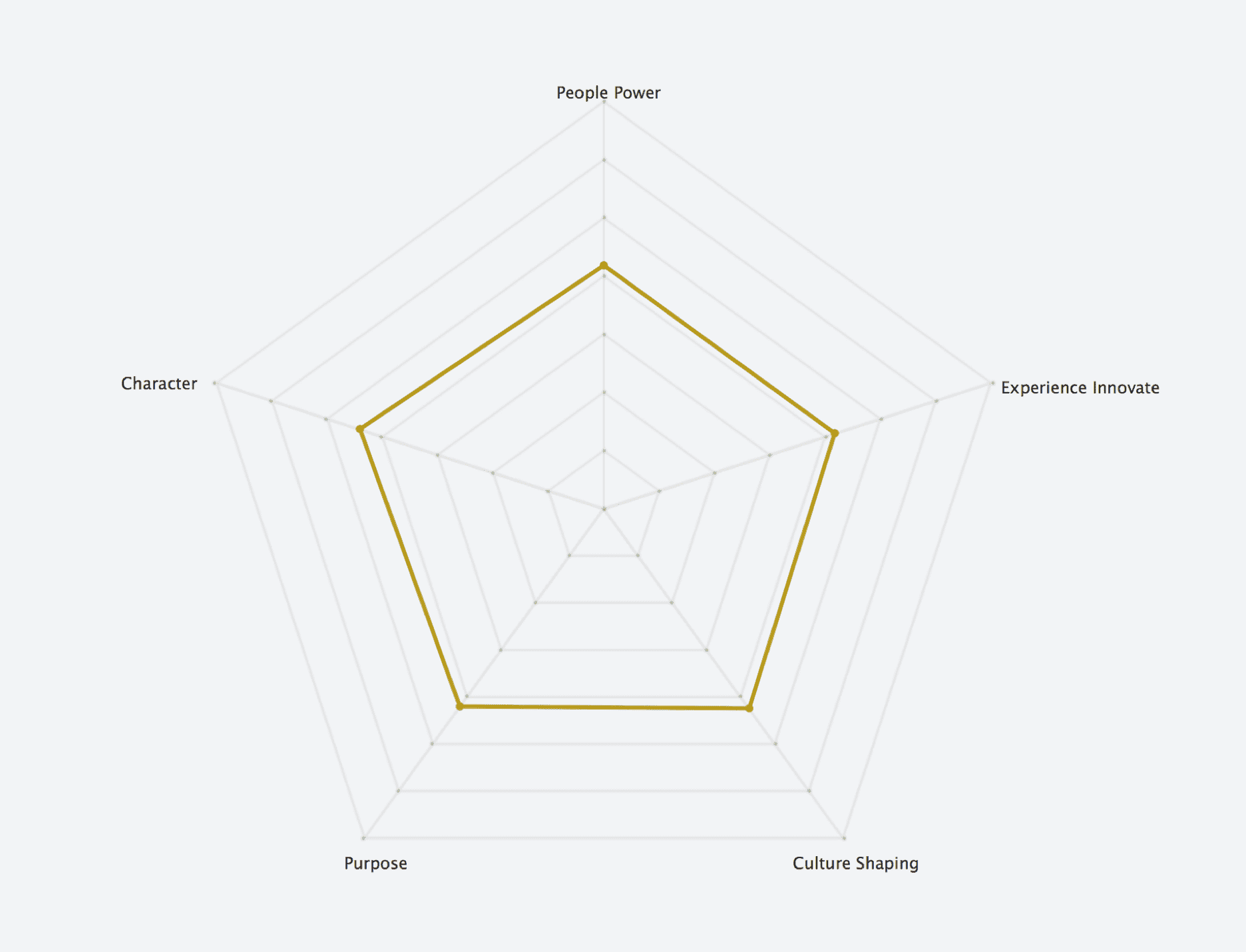
Chart showing how Glossier maps against the 5 Participation Pillars. Source: U.S. Participation Brand Index, 2021, USA
But, when we drill down further into the data, it is clear that the pillar that really pulls the brand apart from others in the study is People Power.
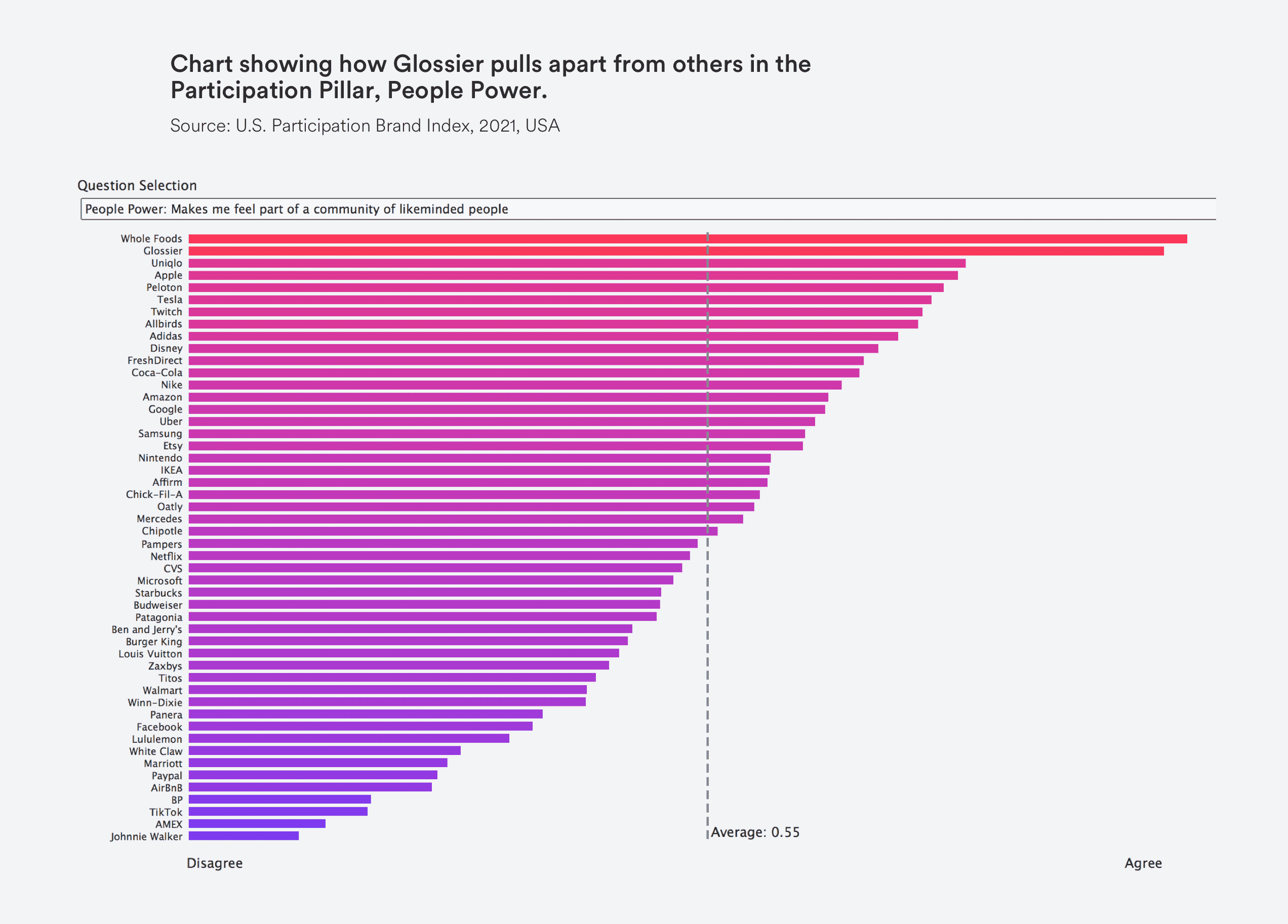
Chart showing how Glossier pulls apart from others in the Participation Pillar, People Power. Source: U.S. Participation Brand Index, 2021, USA
A closer look again reveals the precise characteristics of Glossier’s People Power. It is the more profound aspects that rise to the top. This is a brand that is seen to provide truly meaningful connective experiences rather than just being a brand that has a lot of fans and influencers on social media. It “makes me feel like part of a community of likeminded people”, “listens to its customers” and “creates opportunities for me to express myself”.
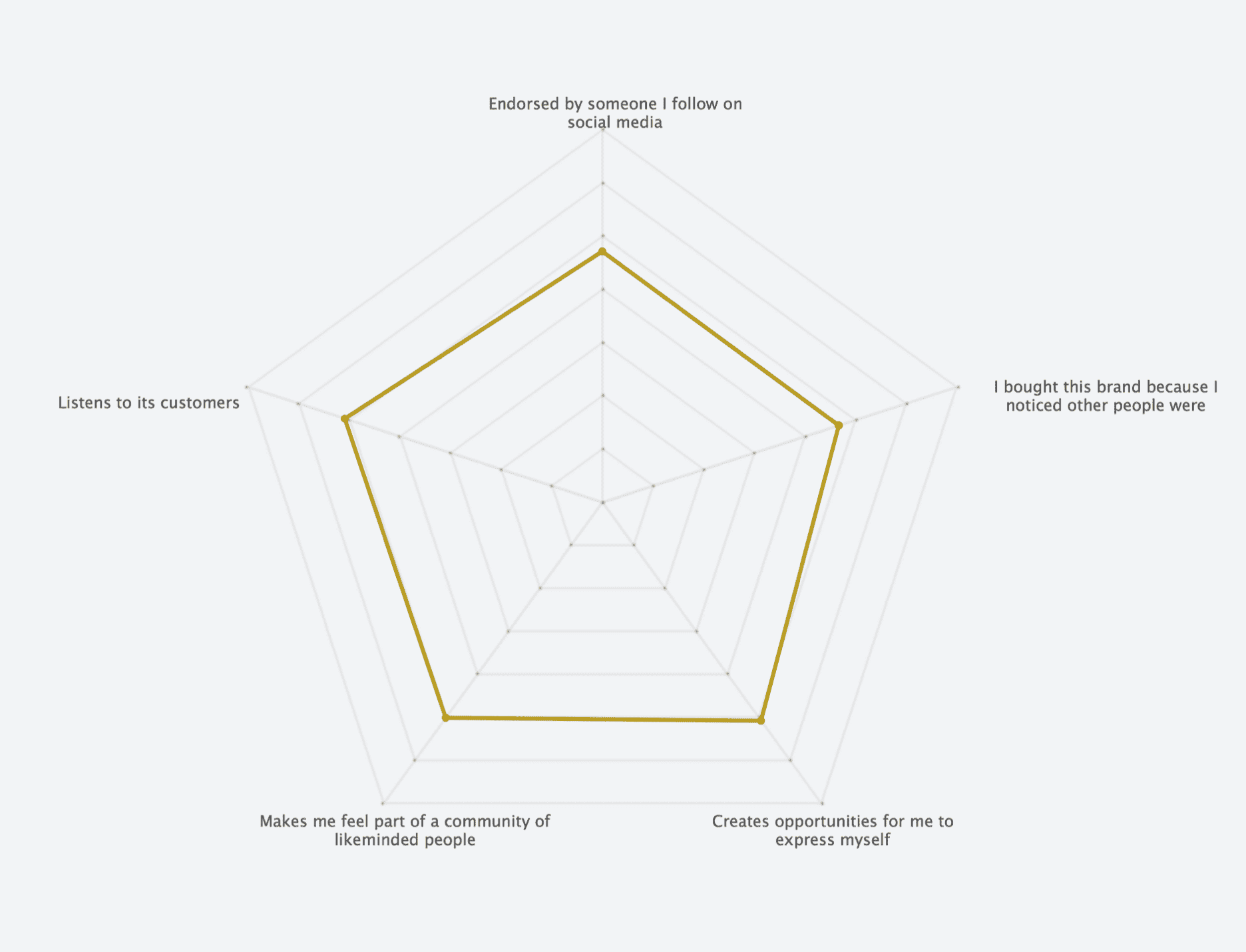
Chart revealing the precise characteristics of Glossier’s ‘People Power’. Source: U.S. Participation Brand Index, 2021, USA
Where other brands might dream of cultivating communities of passionate fans, and some might actually succeed, these are often seen as audiences to be kept engaged, and sometimes cynically activated as advocates. Glossier goes further, putting its community at the beating heart of its business, as its source of wallets.
Glossier’s ecosystem of two-way conversations, through which it asks questions of its community, listens to and acts on their ideas, has created a unique business model and competitive advantage.
We have represented the looped nature of the Glossier customer value proposition in the diagram below.
The ‘contract’ at the heart of the brand experience is one where Glossier facilitates customer-to-customer and customer-to-brand interactions throughout the whole customer experience.

Diagram showcasing Glossier’s system of looped conversations.
Glossier opens up conversations with customers through inspirational content intended to provoke interaction and instil trust.

Brand-agnostic advice and inspiration on the ‘Into The Gloss’ blog.
The experiential stores are laid out and merchandised to encourage long dwell times, conversations and, crucially, social sharing. Social channels are used to shine a light on existing customer UGC.

Glossier’s stores are set up to promote dwell time and social sharing.
The Glossier customer lies at the root of all product launches. Social channels are used to bring followers into the fold and to conduct invaluable, first-hand customer research. (A typical product-sourcing post gets 300+ detailed comments.)
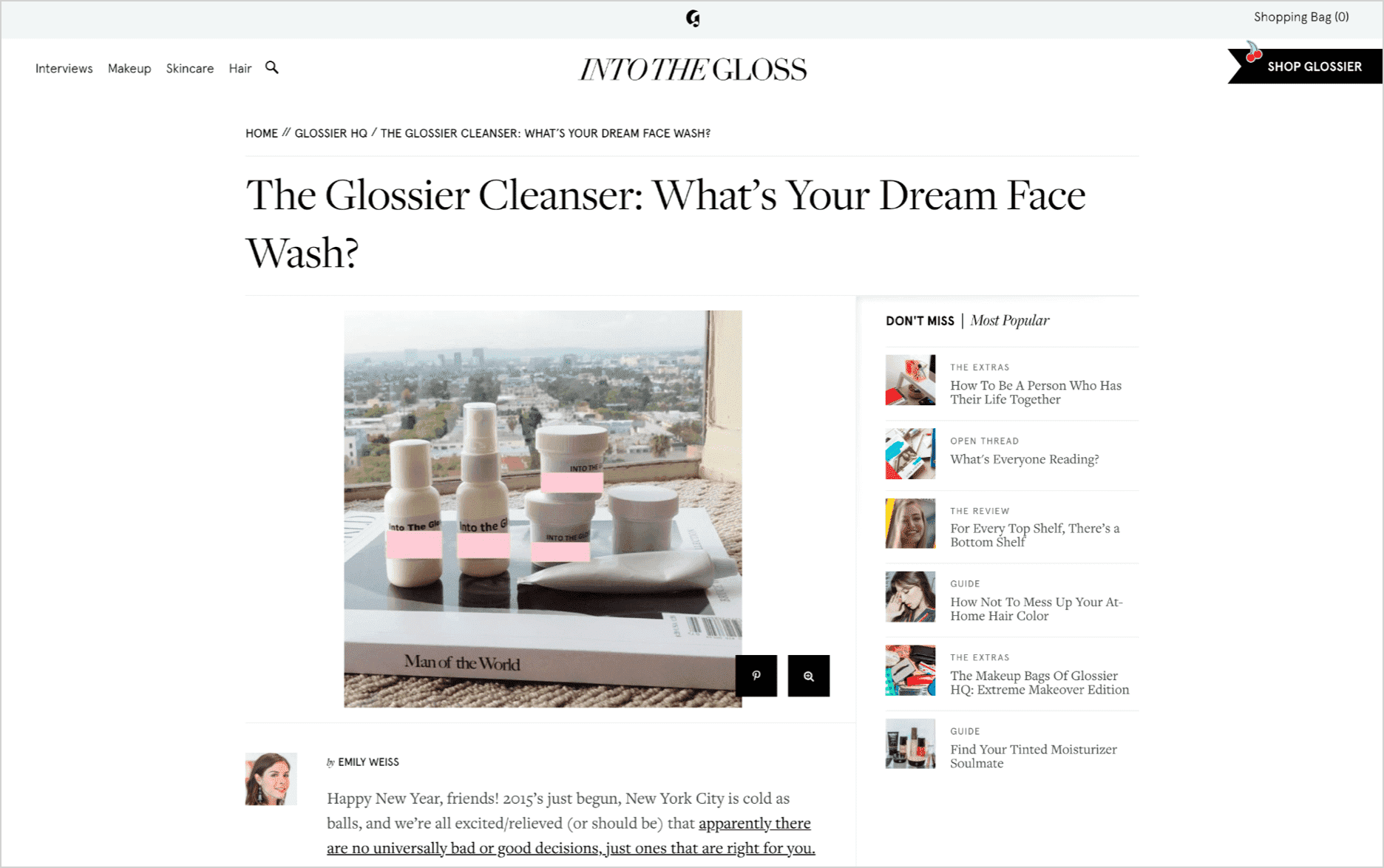
Glossier’s Milky Jelly Cleanser all began with a blog post in which Emily Weiss posed the question: ‘What’s your favourite face wash?’
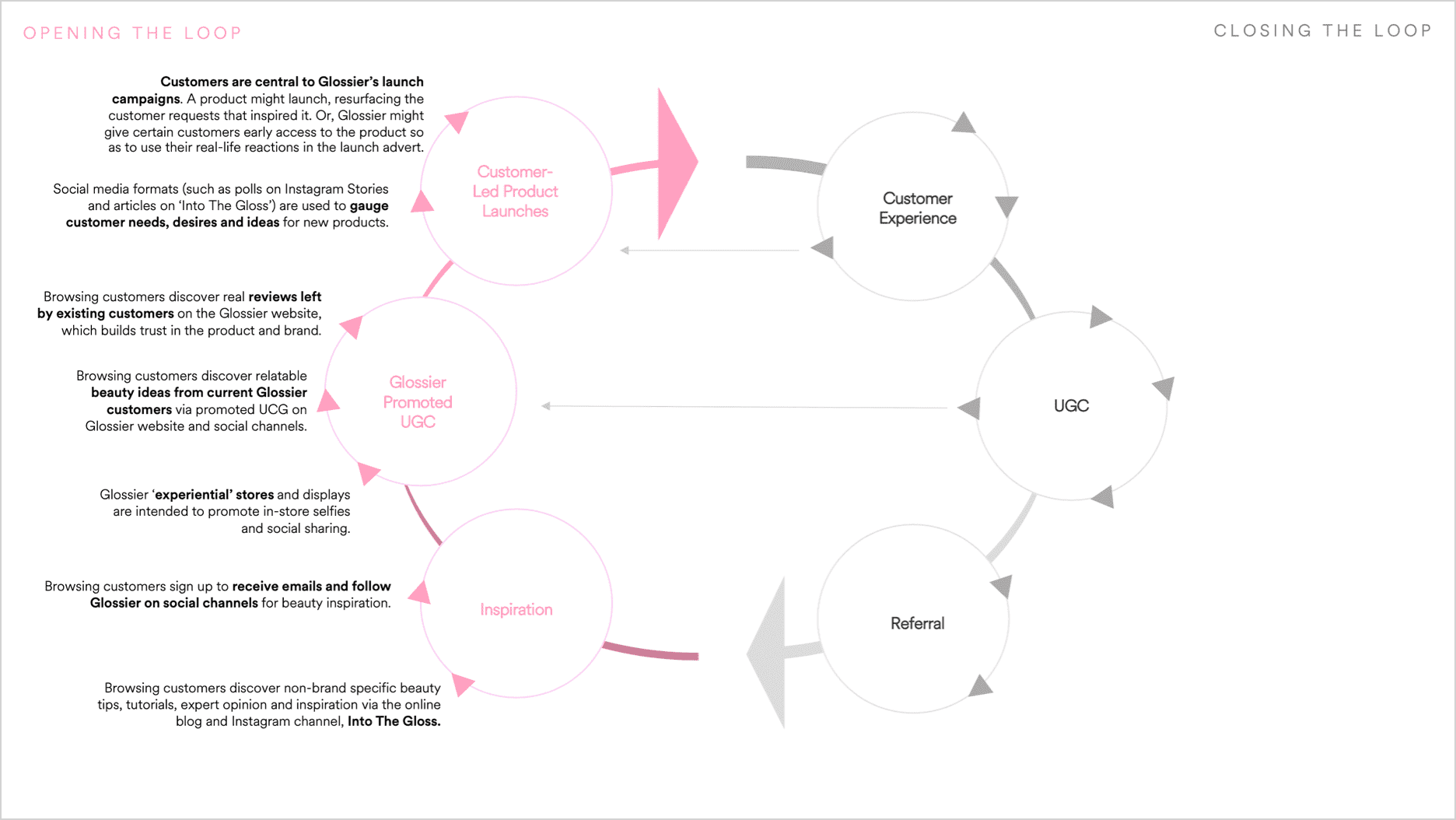
Diagram showcasing Glossier’s system of looped conversations: Inspiration, Glossier Promoted UGC and Customer-Led Product Launches
As customers get closer to purchase, Glossier’s customer service ‘G-Team’ are on hand to answer all questions posed on social channels. Glossier sees its customer service team – not as a cost centre – but as a fundamental driver of innovation and value. Because of course, the G-Team harness the daily influx of customer insight, feeding back to inform product launches and innovation.
Lastly, Glossier knows how to harness the power of its existing, regular customers. Loyal customers are turned into relatable micro-influencers, stoking interest in new products. While Glossier uses its referral scheme to spread the word from one Glossier addict to the next. It’s no wonder, then, that one in eight Glossier customers hear about the brand through word-of-mouth recommendation, which begins the cycle of looped conversations anew.

Glossier ‘reps’ are given a 20% discount code link to share with others.
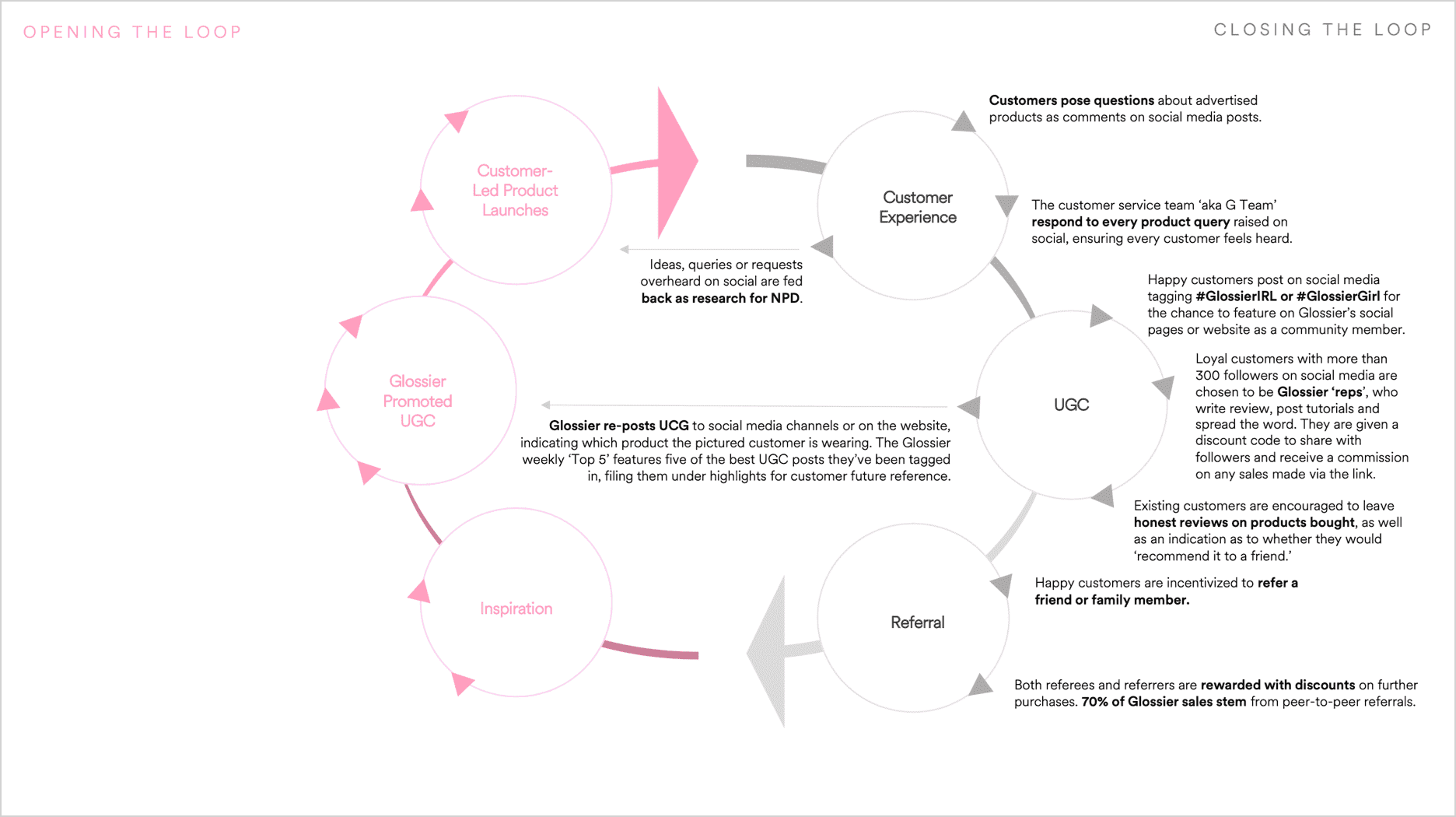
Diagram showcasing Glossier’s system of looped conversations: Customer Experience, UGC, Referral
Taking inspiration from Glossier’s ecosystem of looped conversations, other brands can ask themselves some key questions as they look to design their Participation Branding strategies:
In summary, Glossier’s participation-driven model of looped customer conversations presents an interesting alternative to the traditional marketing ‘funnel.’ Instead of looking to ‘push’ customers along the purchase journey according to a brand’s agenda, it facilitates conversations and connections that instil trust and allow customers the freedom and agency to influence and advocate on behalf of the brand. Effectively, this is about people doing more of your marketing for you.